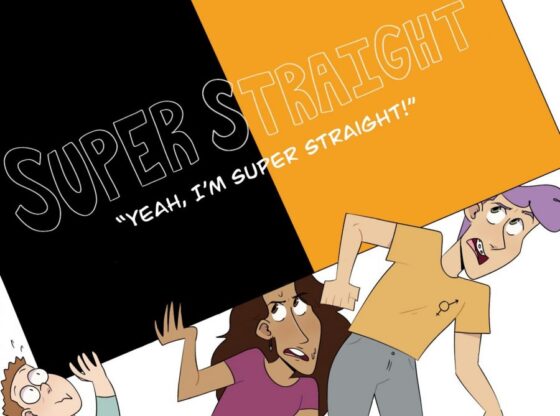In recent times, the term “super straight” has emerged, stirring both intrigue and controversy within online communities. Understanding the genesis, implications, and controversies surrounding this term is crucial for engaging in meaningful discourse. So, what exactly does “super straight” entail, and why does it matter?
Origin of “Super Straight”
The term “super straight” gained prominence primarily on social media platforms. Coined to describe individuals who exclusively pursue romantic relationships with cisgender partners of the opposite sex, it represents a specific sexual orientation within the broader spectrum of human sexuality. Initially introduced as a declaration of personal preference, its usage quickly ignited debates and discussions across various online forums.
Exploring the Controversy
Upon its introduction, “super straight” faced a barrage of reactions, ranging from curiosity to outright condemnation. While some viewed it as a valid expression of individual autonomy, others criticized it for perpetuating harmful stereotypes and exclusionary attitudes. The ensuing online discourse highlighted the complexities inherent in discussing matters of identity and sexual orientation in the digital age.
Criticism and Support
Critics of the “super straight” label argue that it undermines the LGBTQ+ community’s struggle for acceptance and equality. They contend that framing sexual orientation solely around cisgender attraction oversimplifies the diverse experiences within the community. However, proponents of the term assert that it reflects a legitimate aspect of human sexuality and should be respected as such.
Intersection with LGBTQ+ Discourse
The emergence of “super straights” intersects with broader conversations surrounding LGBTQ+ rights and representation. While some view it as a distinct identity separate from the LGBTQ+ spectrum, others argue that it contributes to erasing the nuances of gender and sexual orientation. As such, its place within LGBTQ+ discourse remains a subject of ongoing debate and analysis.
Challenges and Backlash
Navigating the discourse surrounding “super straights” has not been without its challenges. Individuals identifying with this label often face scrutiny and backlash from both within and outside online communities. Addressing misconceptions and combating prejudice requires a concerted effort to foster empathy and understanding among all parties involved.
Cultural Implications
Beyond its online origins, “super straights” has permeated popular culture, appearing in memes, discussions, and even mainstream media. Its portrayal in various forms of entertainment reflects society’s evolving attitudes towards gender and sexuality. However, the portrayal is not always accurate or nuanced, leading to further misinterpretation and polarization.
Educational Opportunities
Amidst the controversy, there exist opportunities for education and enlightenment. By promoting open dialogue and providing accurate information, misconceptions surrounding “super straight” can be addressed. Encouraging empathy and respect for diverse experiences is essential for fostering a more inclusive and understanding society.
Moving Forward
As we navigate the complexities of human sexuality and identity, it is imperative to approach discussions surrounding “super straight” with empathy and open-mindedness. By recognizing the validity of diverse experiences and promoting inclusivity, we can foster a more tolerant and accepting society for all individuals, regardless of sexual orientation.
Conclusion
In conclusion, the term “super straights” encapsulates a complex and nuanced aspect of human sexuality. While it has sparked debates and controversies, it also presents an opportunity for dialogue and understanding. By engaging in respectful discourse and challenging preconceived notions, we can move towards a more inclusive and accepting society for all.
Unique FAQs
- Is “super straights” a legitimate sexual orientation?
- While some individuals identify with the label, its legitimacy remains a subject of debate within LGBTQ+ communities and beyond.
- Does identifying as “super straight” imply prejudice against LGBTQ+ individuals?
- Not necessarily. Like any sexual orientation, individuals identifying as “super straight” may hold diverse attitudes towards LGBTQ+ individuals.
- Can someone be both LGBTQ+ and “super straight”?
- The intersection of different sexual orientations and identities is complex and varies from person to person. Some may identify with both LGBTQ+ and “super straight” labels, while others may not.
- How can we promote understanding and acceptance of “super straight” individuals?
- By fostering open dialogue, challenging stereotypes, and promoting empathy, we can create a more inclusive environment for individuals of all sexual orientations.
- What role does media representation play in shaping perceptions of “super straight” individuals?
- Media portrayals can influence public perceptions and attitudes towards “super straight” individuals. It’s essential for media representations to be accurate, respectful, and inclusive of diverse experiences.


